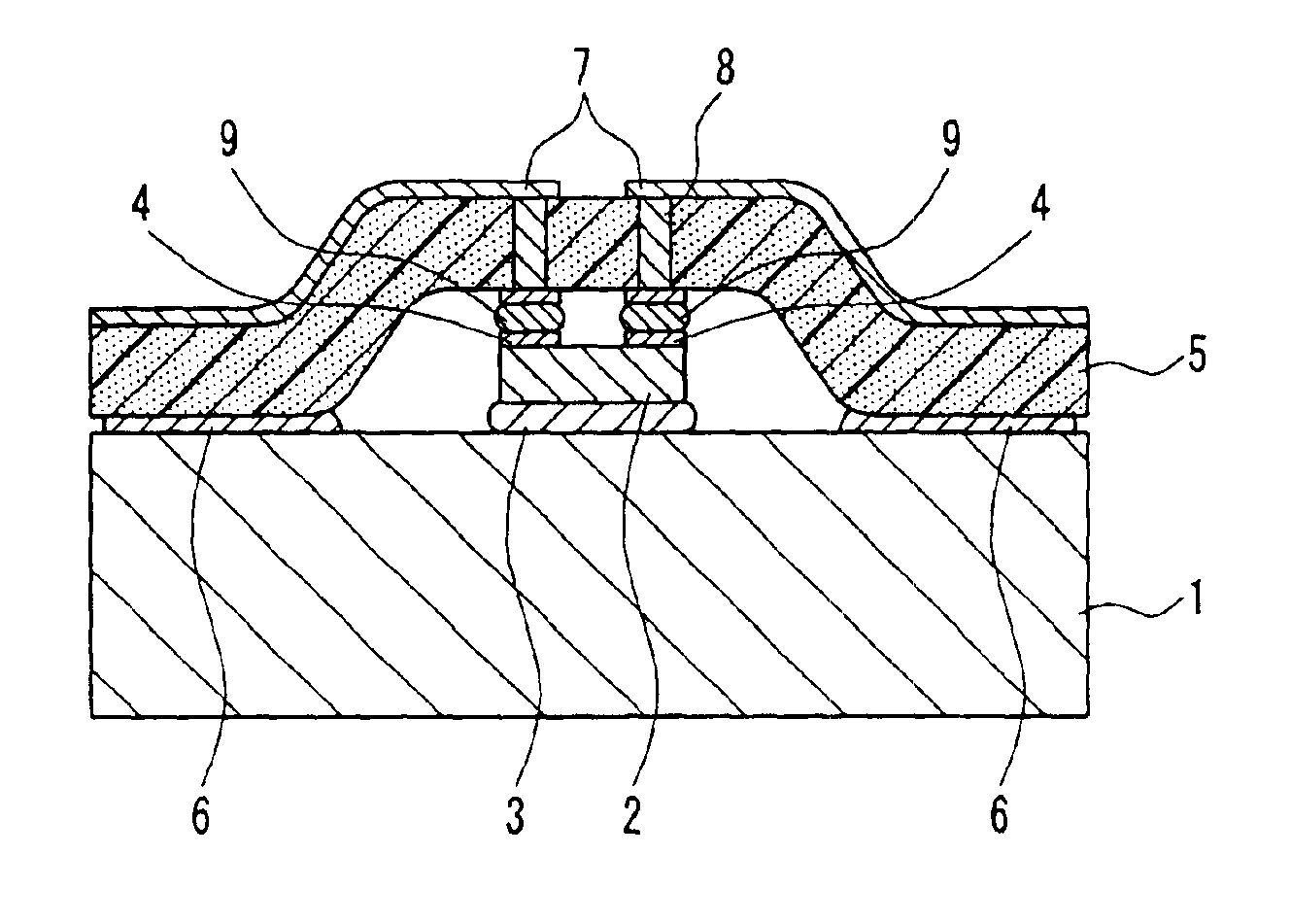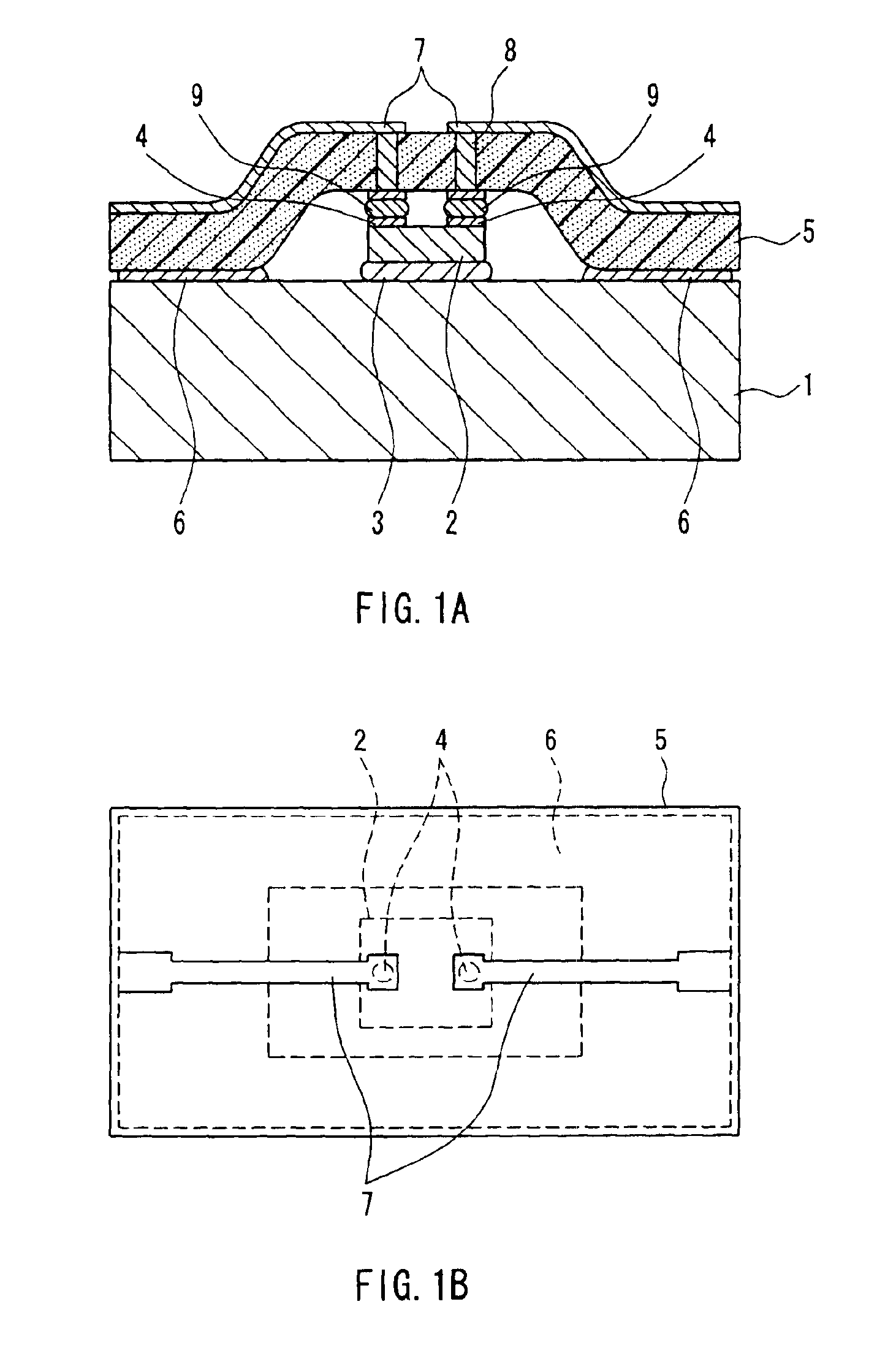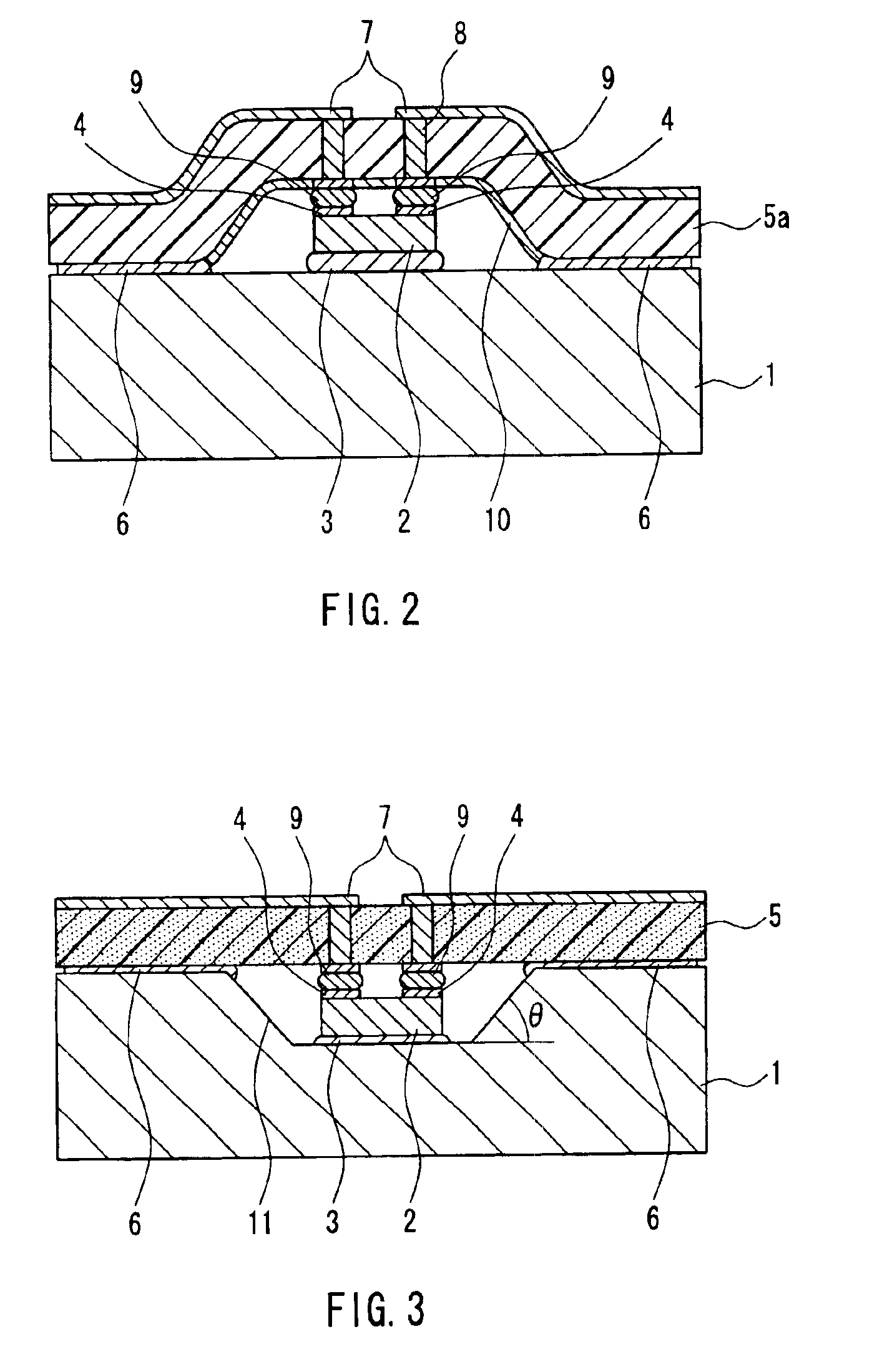Light-emitting device
a technology of light-emitting devices and semiconductors, which is applied in the direction of semiconductor devices, semiconductor/solid-state device details, electrical devices, etc., can solve the problems of reducing the yield of light-emitting devices, increasing production costs, and difficult to decrease the thickness of devices, so as to achieve low cost, reduce thickness, and produce good yield
- Summary
- Abstract
- Description
- Claims
- Application Information
AI Technical Summary
Benefits of technology
Problems solved by technology
Method used
Image
Examples
embodiment 1
[0035]FIG. 1A is a cross-sectional view showing a light-emitting device according to Embodiment 1 of the present invention, and FIG. 1B is a plan view thereof. A semiconductor light-emitting element, such as an InGaN-based light-emitting diode 2 that emits light in blue, is fixed to a support substrate 1 with a silver paste 3. A transparent film 5 made of resin that is transparent to blue light is placed so as to cover an upper portion of the light-emitting diode 2, and fixed to the support substrate 1 with an adhesive 6. An electrode pattern 7 is formed on a surface of the transparent film 5. The electrode pattern 7 extends to a reverse surface of the transparent film 5 through through-holes 8 immediately above the light-emitting diode 2, and is electrically connected to terminal electrodes 4 of the light-emitting diode 2 through gold bumps 9. A powdery phosphor pigment is mixed in the transparent film 5 in a ratio in accordance with the level of white light to be obtained.
[0036]Ac...
embodiment 2
[0039]FIG. 2 is a cross-sectional view showing a light-emitting device according to Embodiment 2 of the present invention. Embodiment 2 is different from Embodiment 1 in that a transparent film 5a does not contain a phosphor pigment, and a phosphor film 10 is formed in a thin film shape on a surface of the transparent film 5a.
[0040]According to the above-mentioned configuration, the strength of the transparent film 5a can be prevented from being degraded when a large amount of phosphor is contained in the transparent film 5a. Furthermore, any amount of phosphor can be used.
[0041]The phosphor film 10 may be provided on an upper surface of the transparent film 5a. However, in the case where the phosphor film 10 is provided on a lower surface of the transparent film 5a (i.e., on a surface of the transparent film 5a on the light-emitting diode 2 side), the following advantage is obtained. Light emitted from the light-emitting diode 2 can be converted to visible light on a wavelength si...
embodiment 3
[0043]FIG. 3 is a cross-sectional view of a light-emitting device according to Embodiment 3 of the present invention. Embodiment 3 is different from Embodiment 1 in that a concave portion 11 is formed in the support substrate 1, and the light-emitting diode 2 is mounted on a bottom surface of the concave portion 11. For example, aluminum is used for the support substrate 1, and the concave portion 11 of about 1 mm on each side and a depth of about 100 μm substantially equivalent to the thickness of the light-emitting diode 2 can be formed by press forming. Strictly, the depth of the concave portion 11 is greater than the thickness of the light-emitting diode 2. However, a total thickness of the silver paste 3, the terminal electrodes 4, and the gold bumps 9 is substantially negligible.
[0044]With the above-mentioned configuration, light emitted sideways from the light-emitting diode 2 is allowed to be reflected from side walls of the concave portion 11 to be guided to the transparent...
PUM
 Login to View More
Login to View More Abstract
Description
Claims
Application Information
 Login to View More
Login to View More - R&D
- Intellectual Property
- Life Sciences
- Materials
- Tech Scout
- Unparalleled Data Quality
- Higher Quality Content
- 60% Fewer Hallucinations
Browse by: Latest US Patents, China's latest patents, Technical Efficacy Thesaurus, Application Domain, Technology Topic, Popular Technical Reports.
© 2025 PatSnap. All rights reserved.Legal|Privacy policy|Modern Slavery Act Transparency Statement|Sitemap|About US| Contact US: help@patsnap.com



